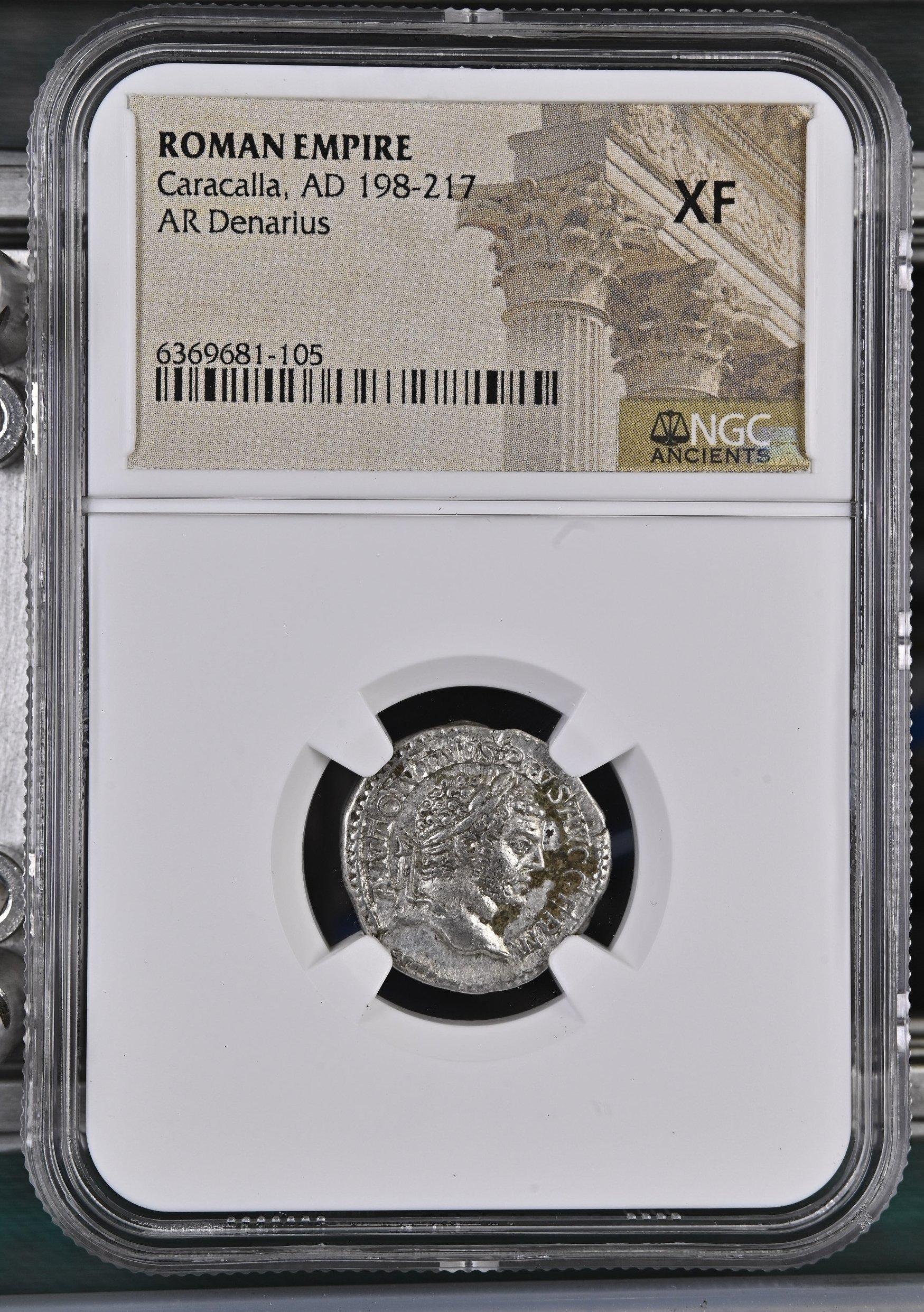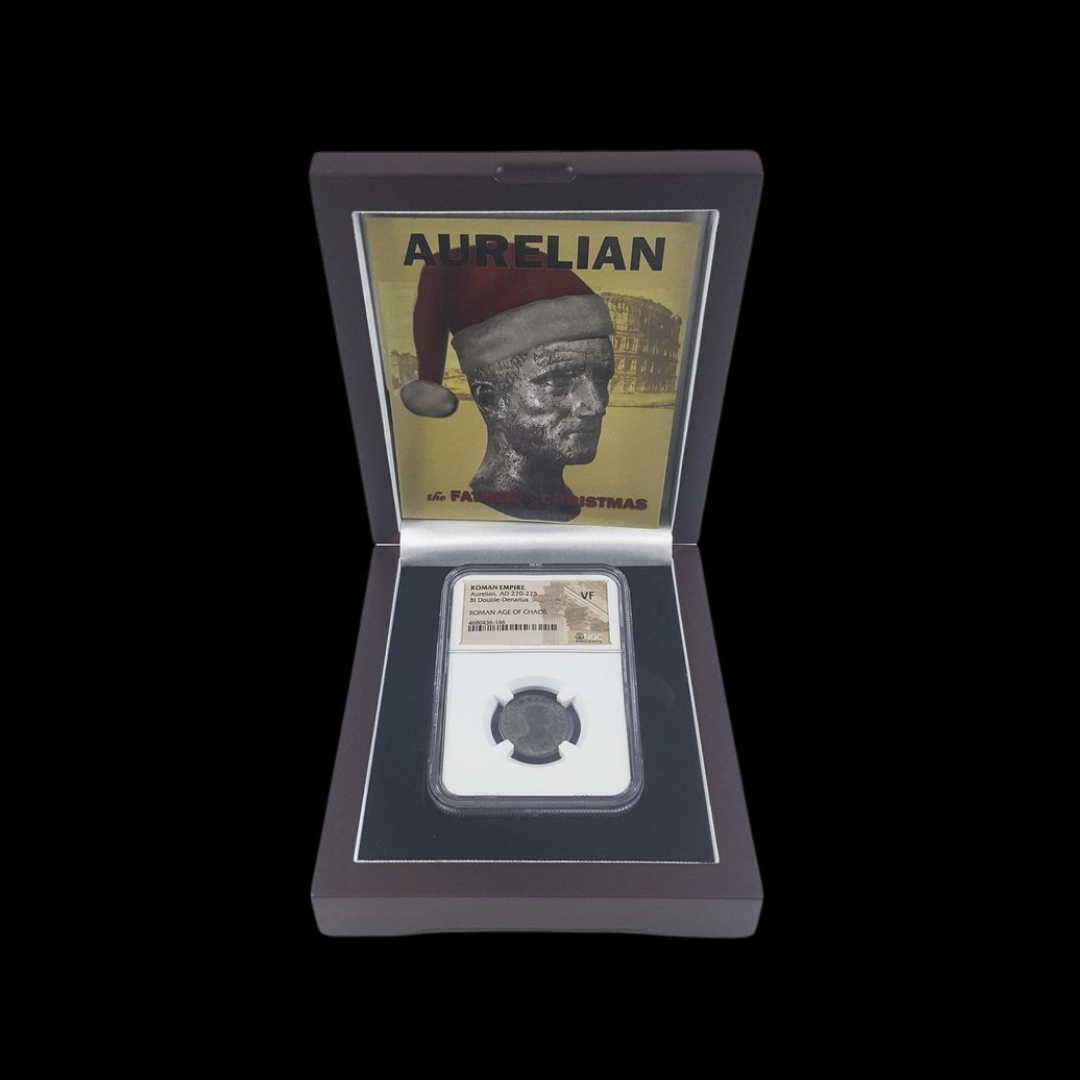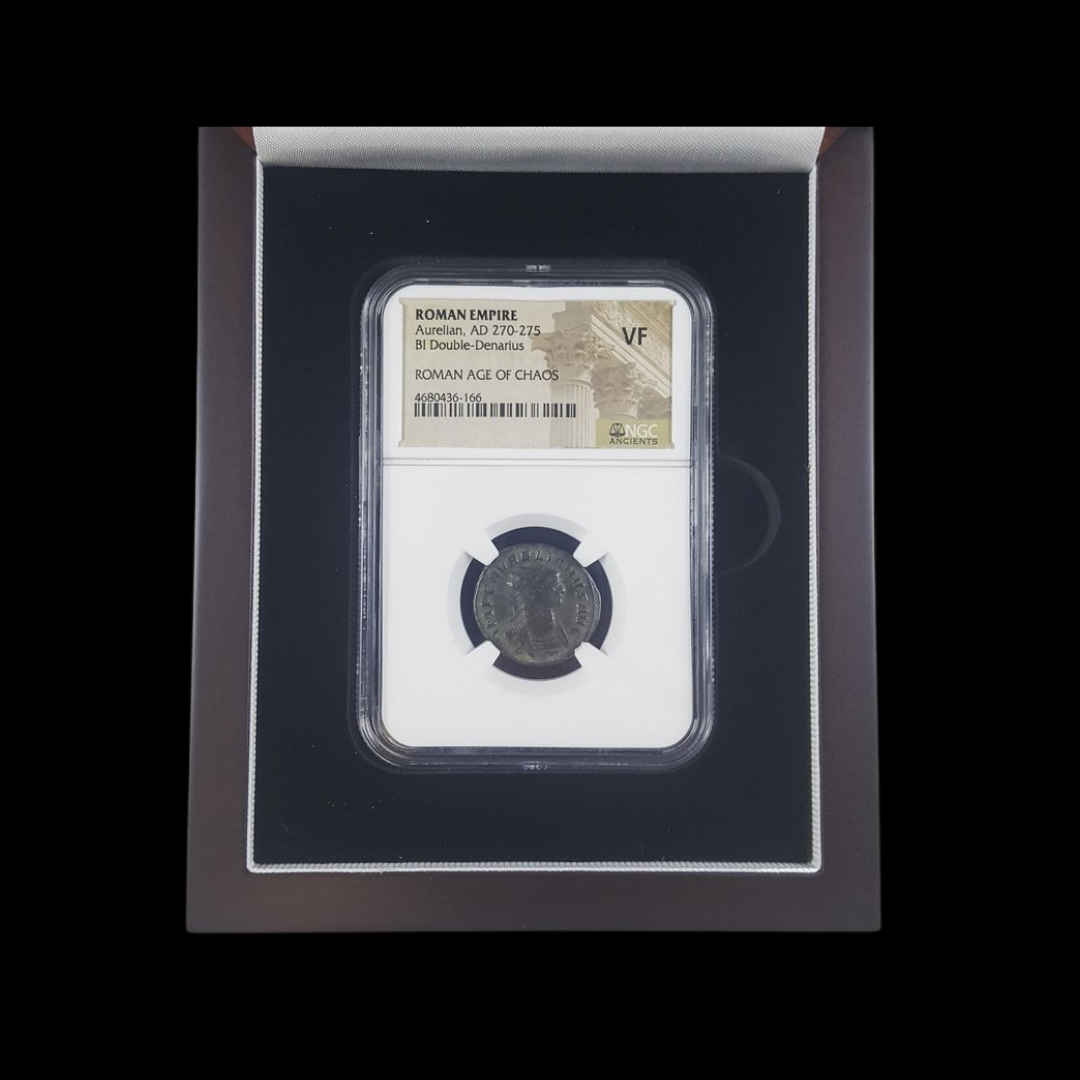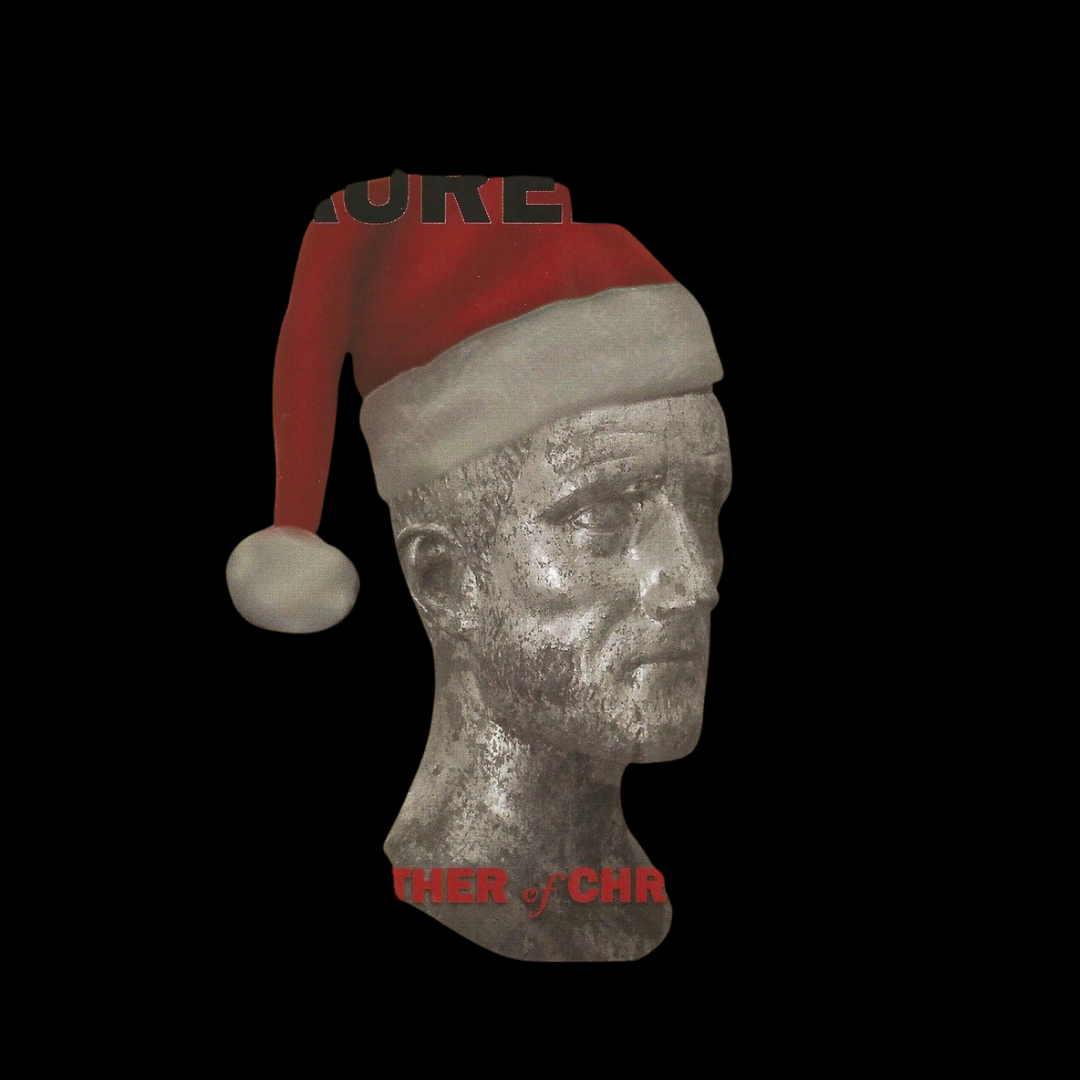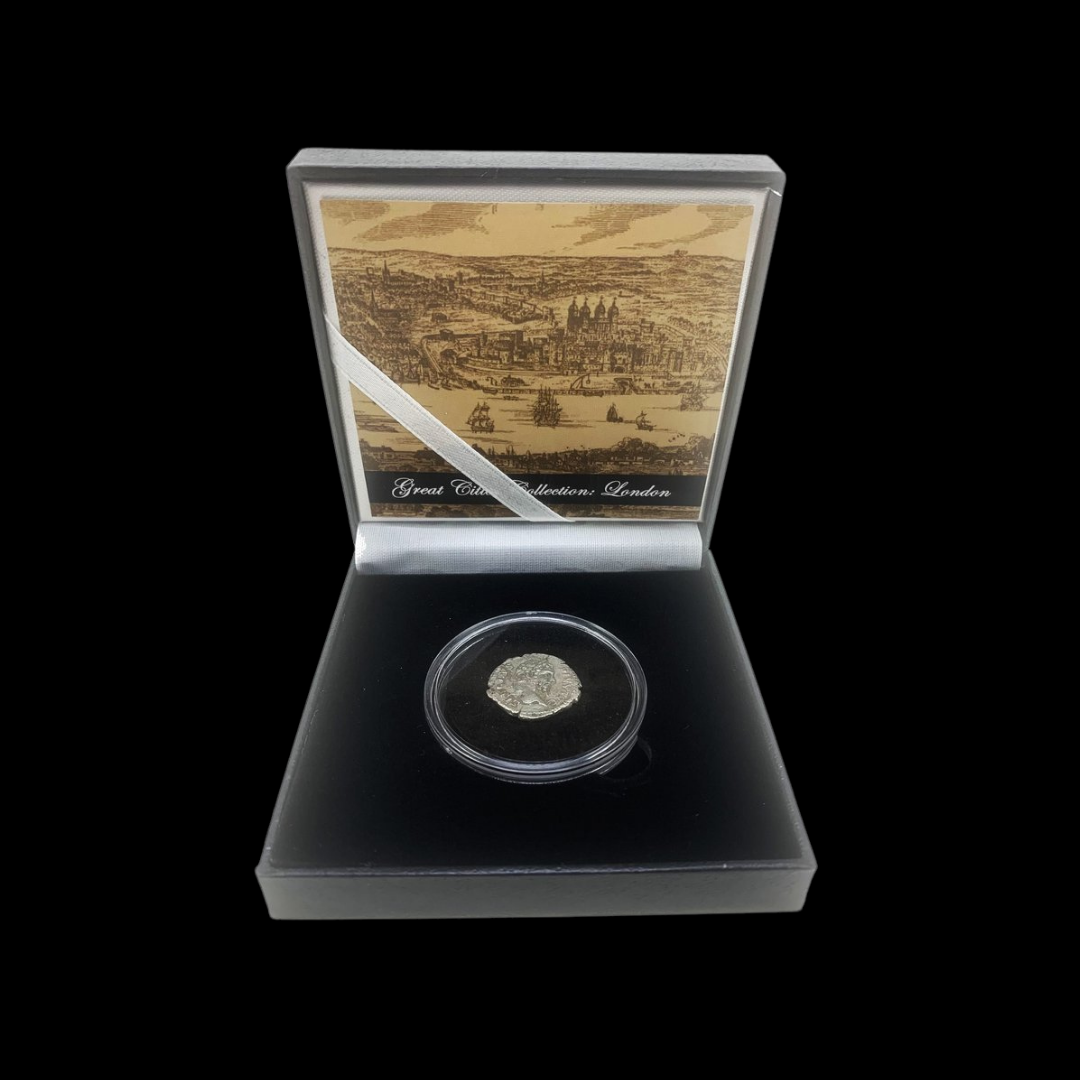 Image 1 of 5
Image 1 of 5

 Image 2 of 5
Image 2 of 5

 Image 3 of 5
Image 3 of 5

 Image 4 of 5
Image 4 of 5

 Image 5 of 5
Image 5 of 5






Roman Bronze AE3 of Honorius (about 1,600-1,630 years ago)
This bronze coin is an AE3 denomination issued during the reign of Emperor Honorius, who ruled the Western Roman Empire from 393 to 423 CE. As the son of Theodosius the Great, Honorius presided over the Western half of the empire during an increasingly turbulent period marked by barbarian invasions and internal political instability.
Coin Description:
Front side: Portrait of Honorius facing right, wearing a pearl diadem and imperial robes, with his name and titles in Latin around the edge.
Back side: Likely features late Roman imperial imagery such as the emperor standing with military standards, Victory figure, or possibly the "GLORIA ROMANORVM" (Glory of the Romans) design common during this period.
Technical Details:
Bronze alloy composition
Denomination: AE3 (medium-sized bronze coin in the late Roman monetary system)
Weight: Approximately 2-3 grams
Diameter: Approximately 18-20 mm
NGC Certified for authentication and preservation
Minted between 393-423 CE
Condition as specified by NGC certification
Historical Significance: Honorius's reign coincided with momentous events including the Visigothic sack of Rome in 410 CE, the first time the eternal city had fallen to foreign invaders in nearly 800 years. Despite these calamities, Honorius maintained his position largely through the military support of his general and father-in-law Stilicho (until Stilicho's execution in 408 CE). This coin represents the gradually diminishing power of Western Roman authority during a period when Germanic kingdoms were establishing themselves within nominal Roman territories, foreshadowing the empire's eventual collapse in the West.
This bronze coin is an AE3 denomination issued during the reign of Emperor Honorius, who ruled the Western Roman Empire from 393 to 423 CE. As the son of Theodosius the Great, Honorius presided over the Western half of the empire during an increasingly turbulent period marked by barbarian invasions and internal political instability.
Coin Description:
Front side: Portrait of Honorius facing right, wearing a pearl diadem and imperial robes, with his name and titles in Latin around the edge.
Back side: Likely features late Roman imperial imagery such as the emperor standing with military standards, Victory figure, or possibly the "GLORIA ROMANORVM" (Glory of the Romans) design common during this period.
Technical Details:
Bronze alloy composition
Denomination: AE3 (medium-sized bronze coin in the late Roman monetary system)
Weight: Approximately 2-3 grams
Diameter: Approximately 18-20 mm
NGC Certified for authentication and preservation
Minted between 393-423 CE
Condition as specified by NGC certification
Historical Significance: Honorius's reign coincided with momentous events including the Visigothic sack of Rome in 410 CE, the first time the eternal city had fallen to foreign invaders in nearly 800 years. Despite these calamities, Honorius maintained his position largely through the military support of his general and father-in-law Stilicho (until Stilicho's execution in 408 CE). This coin represents the gradually diminishing power of Western Roman authority during a period when Germanic kingdoms were establishing themselves within nominal Roman territories, foreshadowing the empire's eventual collapse in the West.
This bronze coin is an AE3 denomination issued during the reign of Emperor Honorius, who ruled the Western Roman Empire from 393 to 423 CE. As the son of Theodosius the Great, Honorius presided over the Western half of the empire during an increasingly turbulent period marked by barbarian invasions and internal political instability.
Coin Description:
Front side: Portrait of Honorius facing right, wearing a pearl diadem and imperial robes, with his name and titles in Latin around the edge.
Back side: Likely features late Roman imperial imagery such as the emperor standing with military standards, Victory figure, or possibly the "GLORIA ROMANORVM" (Glory of the Romans) design common during this period.
Technical Details:
Bronze alloy composition
Denomination: AE3 (medium-sized bronze coin in the late Roman monetary system)
Weight: Approximately 2-3 grams
Diameter: Approximately 18-20 mm
NGC Certified for authentication and preservation
Minted between 393-423 CE
Condition as specified by NGC certification
Historical Significance: Honorius's reign coincided with momentous events including the Visigothic sack of Rome in 410 CE, the first time the eternal city had fallen to foreign invaders in nearly 800 years. Despite these calamities, Honorius maintained his position largely through the military support of his general and father-in-law Stilicho (until Stilicho's execution in 408 CE). This coin represents the gradually diminishing power of Western Roman authority during a period when Germanic kingdoms were establishing themselves within nominal Roman territories, foreshadowing the empire's eventual collapse in the West.
Honorius (9 September 384 – 15 August 423) was Roman emperor from 393 to 423. He was the younger son of emperor Theodosius I and his first wife Aelia Flaccilla. After the death of Theodosius in 395, Honorius, under the regency of Stilicho, ruled the western half of the empire while his brother Arcadius ruled the eastern half. His reign over the Western Roman Empire was notably precarious and chaotic. In 410, Rome was sacked for the first time since the Battle of the Allia almost 800 years prior.
Honorius was born to Emperor Theodosius I and Empress Aelia Flaccilla on 9 September 384 in Constantinople.[1] He was the brother of Arcadius and Pulcheria. In 386, his mother died, and in 387, Theodosius married Galla who had taken a temporary refuge in Thessaloniki with her family, including her brother Valentinian II and mother Justina, away from usurper Magnus Maximus. Theodosius and Galla had a daughter, Honorius's half-sister Galla Placidia. Honorius, Arcadius, and Galla Placidia were the only children of Theodosius to survive into adulthood.









